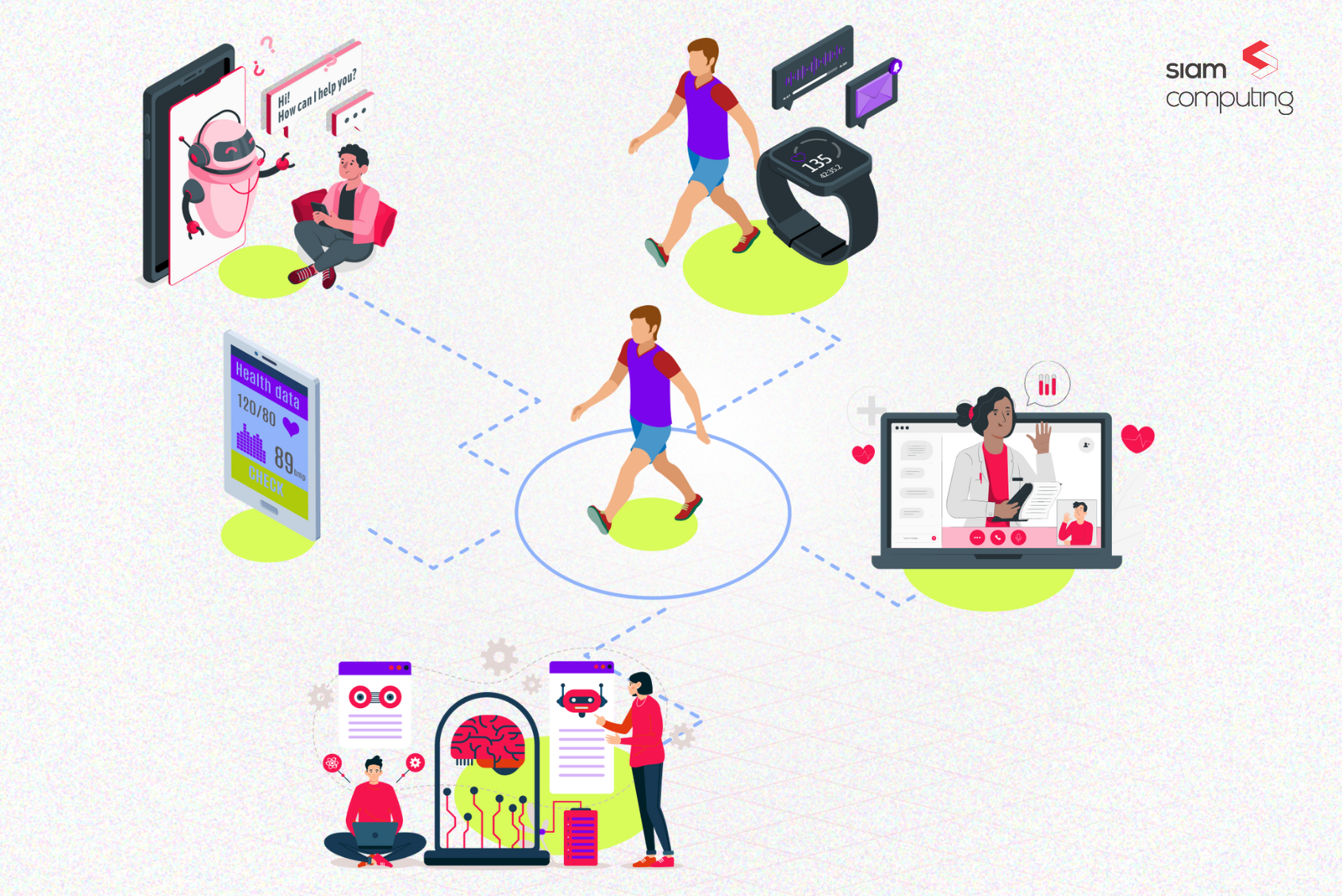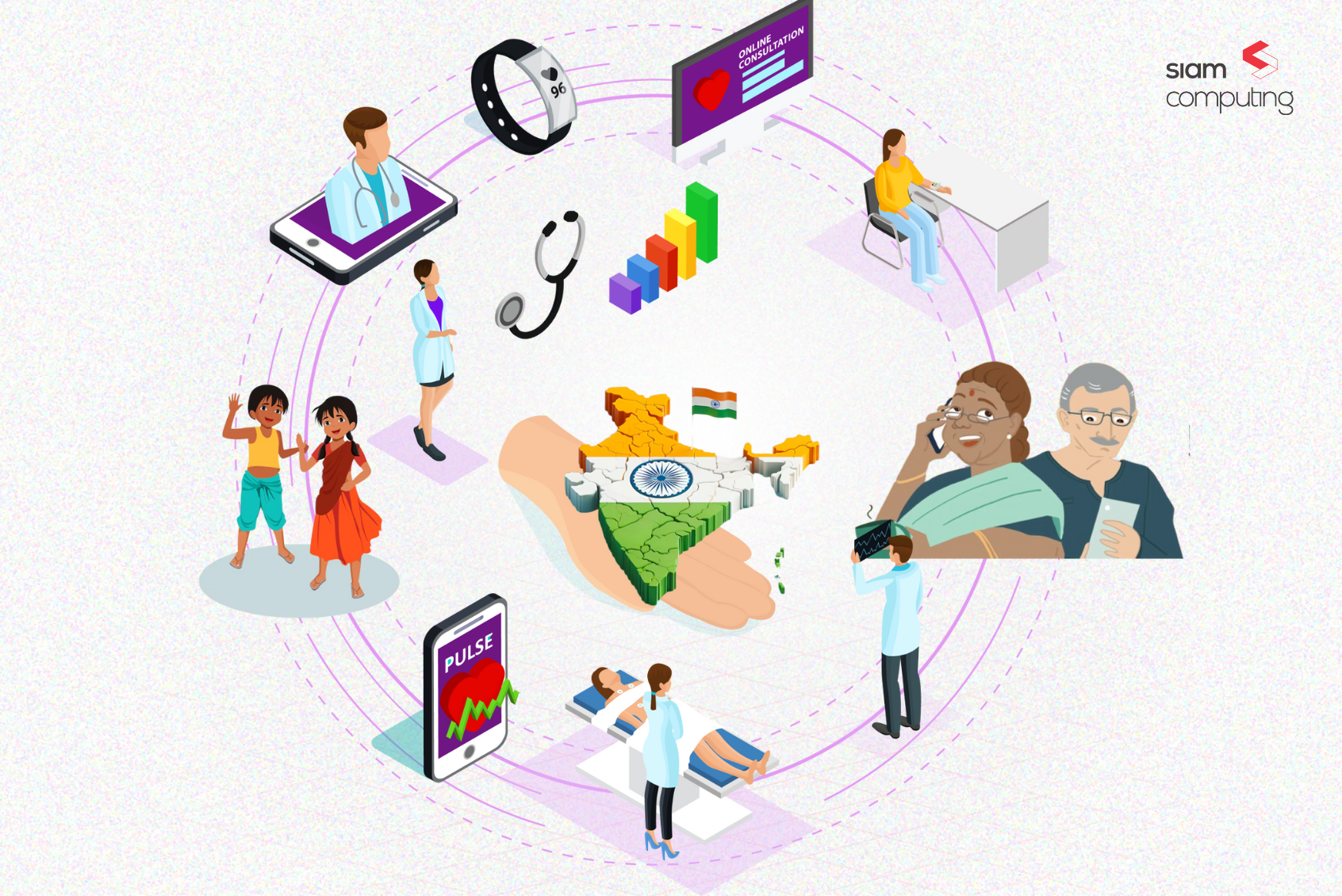The healthcare landscape is undergoing a significant transformation, moving away from a fee-for-service model and towards value-based care (VBC). This shift incentivizes providers, policymakers, and payers to focus on improving patient outcomes and quality of care at scale.
To enhance the quality of healthcare at scale, population health management, especially data from social determinants of health (SDoH) plays a critical factor.
Understanding Social Determinants of Health (SDoH)
SDoH are the social and economic conditions that influence individual and community health outcomes. Research has consistently shown a strong correlation between SDoH and health outcomes.
These factors extend far beyond traditional medical care and encompass aspects like:
- Access to nutritious food: Food deserts, characterized by limited access to fresh fruits, vegetables, and healthy staples, contribute to dietary deficiencies and increased risk of chronic diseases.
- Safe and Stable Housing: Substandard housing conditions, overcrowding, and exposure to environmental hazards can exacerbate existing health issues like asthma and respiratory problems.
- Education and Literacy: Limited educational attainment can hinder an individual’s ability to understand health information, navigate the healthcare system, and make informed decisions about their well-being.
- Transportation: Lack of reliable transportation can create significant barriers to accessing preventive care, specialist consultations, and essential medications.
- Social Support Networks: Strong social connections provide emotional support and promote healthy behaviors, while isolation can lead to increased stress and poor health outcomes.
- Exposure to Violence and Crime: Living in communities with high crime rates can contribute to mental health issues, chronic stress, and risky behaviors.
- Environmental Quality: Exposure to environmental pollutants, poor air or water quality, and inadequate sanitation can lead to a range of health problems.
- Economic stability: Last but not least, the factors related to how much money a family earns and saves will indirectly decide the other factors mentioned above. Income and economic stability decide how a member can meet their family’s health.
Payer Portals: A Gateway to SDoH Integration
Payer portals are secure online platforms providing members with 24/7 access to manage their health insurance plans. These portals offer a wealth of features, including:
- Submit and track claims, view claims history, and appeal denied claims online.
- Explanation of benefits (EOBs).
- Understand and verify patient eligibility, and out-of-pocket costs.
- Making insurance premium payments.
- Downloading medical records.
- Scheduling appointments (in some cases).
- Communicating with customer service.
- Submit pre-authorizations and check approval status.
- Access real-time benefit information.
- Communicate with the payer through secure messaging.
- Collect data to improve care coordination and population health management.
- Offer value-added services to patients and providers, such as wellness programs and disease management tools.
Payers can utilize SDoH data, and integrate them into payer platforms to derive insights into patient outcomes and how to improve them at scale.
Strategic SDoH Data Collection through Payer Platforms
There is also a unique opportunity for payer portals to become gateways for certain types of SDoH data. This integration empowers payers in several ways, but effective data collection is the foundation for success.
Here’s a closer look at a few ways how payer platforms can strategically collect SDoH data:
1. Data Enrichment:
- Leverage existing patient data: Payers can use demographic information (age, gender, race, ethnicity) available in payer portals to enrich with external SDOH data sources.
- Geographic data: With member consent, anonymized geolocation data collected through member portals can provide insights into factors like proximity to healthy food options, safe housing options, and environmental hazards.
- Claims data analysis: Analyze claims data for patterns associated with SDOH factors (e.g., high utilization of emergency services in certain areas might indicate transportation barriers).
2. Third-party Data Sources:
- Commercial data vendors: Utilize commercial data providers specializing in SDOH data to supplement payer data.
- Government datasets: Explore publicly available datasets from census bureau, community Surveys, and other sources.
Community-based organizations: Partner with local organizations to gather SDOH data through surveys or community assessments.
3. Patient-reported outcomes (PROs):
- Incorporate SDOH questions into patient surveys or intake forms to gather self-reported information.
- Patient experience platforms of healthcare providers, integrated with payer portals are also a powerful source for collecting PROs.
Building Trust and Transparency: Considerations for SDoH Data Collection
Collecting SDoH data requires a thoughtful approach that prioritizes member privacy, trust, and transparency. Here are three key considerations:
- Informed Consent: Members should be clearly informed about the purpose of SDoH data collection, how the data will be used, and how their privacy will be protected.
- Data Security: Robust security measures are essential to ensure the confidentiality and integrity of SDoH data. Compliance with HIPAA regulations and industry best practices is paramount.
- Transparency and Control: Members should have the ability to access, review, and correct their SDoH data within the portal. They should also have the option to opt out of SDoH data collection entirely, while still maintaining access to core portal functionalities.
Leveraging SDoH Data in Payer Portals
By strategically collecting and integrating SDoH data, payer portals can transform from passive platforms for claims management into powerful tools for improving population health.
This data empowers payers to:
- Identify Members at Risk: By incorporating SDoH data into their risk stratification models, payers can identify members with higher healthcare needs due to social factors. This allows for targeted outreach and engagement initiatives, such as connecting members with relevant community resources for healthy food access or housing assistance.
- Develop Personalized Care Programs: By partnering with providers, payer portals can be transformed into platforms that deliver personalized care management tools based on SDoH needs. This could include educational resources, appointment reminders for preventive care screenings relevant to SDoH risk factors, or integration with telehealth services to address barriers to accessing in-person care.
- Improve Population Health Management: By tracking SDoH data and the impact of interventions, payers can gain valuable insights into the effectiveness of their population health management programs. This data can then be used to refine strategies and optimize resource allocation.
- Advocate for Policy Change: Payers can use SDoH insights to advocate for policies that address the root causes of health disparities. This could involve collaborating with community organizations and government agencies to develop initiatives that improve access to healthy food, safe housing, and other SDoH factors.
- Product Development: Product managers can leverage SDoH data to develop targeted features and functionalities within the payer portal. This could include integration with community resource databases, educational modules on managing chronic conditions with SDoH limitations, or gamified wellness programs that address social factors.
Beyond the Data: Considerations for Successful Implementation
While the potential benefits of SDoH data integration in payer portals are significant, successful implementation requires careful consideration of aspects that go beyond data:
- Interoperability and Data Sharing: Integrating SDoH data from disparate sources (e.g., community organizations, social service agencies, etc.) requires strong interoperability standards and secure data-sharing mechanisms, which is often lacking in the healthcare landscape.
- Community Partnerships: Addressing SDoH often requires collaboration with community organizations that can provide essential resources and support services. Payers should forge strong partnerships with these entities to ensure a holistic approach to member care.
- Member Education and Trust Building: Members need to understand the benefits and purpose of collecting SDoH data. Payers must prioritize clear communication and build trust with members to encourage data sharing.
Benefits for Patients from SDOH Data Integration into Payer Portals
Integrating SDoH data into payer portals can significantly improve patient outcomes in several ways:
- Early Intervention and Prevention: By identifying members at risk due to SDoH factors, payers can promote preventive care screenings and healthy lifestyle behaviors. This can lead to earlier detection and treatment of chronic diseases, ultimately improving long-term health.
- Improved Chronic Disease Management: Patients facing social barriers often struggle to manage chronic conditions effectively. Payer portals with SDoH integration can provide targeted resources and support systems, such as medication adherence reminders or educational materials on managing health with limited resources.
- Enhanced Patient Engagement: When payer portals address SDoH needs, patients feel more empowered to take control of their health. This increased engagement with the healthcare system can lead to better adherence to treatment plans and improved overall health outcomes.
- Reduced Healthcare Disparities: By addressing the social factors that contribute to health disparities, payer portals can play a crucial role in promoting health equity. This can be achieved through targeted outreach programs and ensuring access to resources that address specific SDoH challenges faced by marginalized communities.
- Social Support Connection: The portal can serve as a platform to connect members with social support services or community organizations that address specific SDoH needs. This can be particularly beneficial for individuals facing social isolation or limited access to resources.
A Win-Win for both Payers and Patients
These interventions can lead to a cascade of positive health outcomes for patients and better business outcomes for payers:
- Improved health status: By addressing SDoH risk factors, patients can experience better management of chronic conditions, reduced hospital admissions, and overall improved well-being.
- Reduced Healthcare Costs: By promoting preventive care, managing chronic conditions effectively, and improving patient engagement, payers can potentially lower overall healthcare costs. Early intervention and improved disease management can lead to fewer hospital admissions and emergency room visits.
- Increased healthcare engagement: Patients empowered with knowledge and resources are more likely to be proactive participants in their own health management.
- Enhanced Member Satisfaction: When payer portals address SDoH needs and empower members to manage their health, it fosters a sense of trust and satisfaction. This can lead to increased member retention and loyalty.
- Improved Quality Ratings: Payer performance is often tied to quality metrics that consider population health outcomes. By addressing SDoH and improving patient outcomes, payers can achieve higher quality ratings, potentially leading to better reimbursement rates and market positioning.
SDoH – A cornerstone for value-based healthcare delivery
By leveraging SDoH data within payer portals, payers have a powerful opportunity to improve population health, enhance member engagement, and achieve positive business outcomes. This shift towards a more holistic approach to health requires a commitment to data security, collaboration with community partners, and ongoing member education.
As the healthcare landscape continues to evolve, payer portals with integrated SDoH functionalities can become a cornerstone of a value-based healthcare system that prioritizes both individual and community well-being.
Siam Computing specializes in developing innovative patient experience platforms for providers and all-encompassing solutions to solve payer-side problems. We understand the intricacies of integrating SDoH data and building solutions that empower both patients and payers.
Contact our product strategists today to discuss specific needs and explore how we can help you build a future-proof payer platform that integrates SDoH for a healthier tomorrow.








